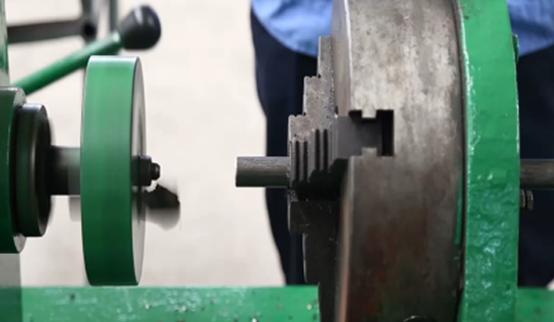 Afrikaans
Afrikaans  Albanian
Albanian  Amharic
Amharic  Arabic
Arabic  Armenian
Armenian  Azerbaijani
Azerbaijani  Basque
Basque  Belarusian
Belarusian  Bengali
Bengali  Bosnian
Bosnian  Bulgarian
Bulgarian  Catalan
Catalan  Cebuano
Cebuano  Corsican
Corsican  Croatian
Croatian  Czech
Czech  Danish
Danish  Dutch
Dutch  English
English  Esperanto
Esperanto  Estonian
Estonian  Finnish
Finnish  French
French  Frisian
Frisian  Galician
Galician  Georgian
Georgian  German
German  Greek
Greek  Gujarati
Gujarati  Haitian Creole
Haitian Creole  hausa
hausa  hawaiian
hawaiian  Hebrew
Hebrew  Hindi
Hindi  Miao
Miao  Hungarian
Hungarian  Icelandic
Icelandic  igbo
igbo  Indonesian
Indonesian  irish
irish  Italian
Italian  Japanese
Japanese  Javanese
Javanese  Kannada
Kannada  kazakh
kazakh  Khmer
Khmer  Rwandese
Rwandese  Korean
Korean  Kurdish
Kurdish  Kyrgyz
Kyrgyz  Lao
Lao  Latin
Latin  Latvian
Latvian  Lithuanian
Lithuanian  Luxembourgish
Luxembourgish  Macedonian
Macedonian  Malgashi
Malgashi  Malay
Malay  Malayalam
Malayalam  Maltese
Maltese  Maori
Maori  Marathi
Marathi  Mongolian
Mongolian  Myanmar
Myanmar  Nepali
Nepali  Norwegian
Norwegian  Norwegian
Norwegian  Occitan
Occitan  Pashto
Pashto  Persian
Persian  Polish
Polish  Portuguese
Portuguese  Punjabi
Punjabi  Romanian
Romanian  Russian
Russian  Samoan
Samoan  Scottish Gaelic
Scottish Gaelic  Serbian
Serbian  Sesotho
Sesotho  Shona
Shona  Sindhi
Sindhi  Sinhala
Sinhala  Slovak
Slovak  Slovenian
Slovenian  Somali
Somali  Spanish
Spanish  Sundanese
Sundanese  Swahili
Swahili  Swedish
Swedish  Tagalog
Tagalog  Tajik
Tajik  Tamil
Tamil  Tatar
Tatar  Telugu
Telugu  Thai
Thai  Turkish
Turkish  Turkmen
Turkmen  Ukrainian
Ukrainian  Urdu
Urdu  Uighur
Uighur  Uzbek
Uzbek  Vietnamese
Vietnamese  Welsh
Welsh  Bantu
Bantu  Yiddish
Yiddish  Yoruba
Yoruba  Zulu
Zulu mining conveyor pulleys
Understanding Mining Conveyor Pulleys Their Importance and Functionality
In the realm of mining, efficiency and reliability are paramount to successful operations. One crucial component often overlooked in the conversation about mining infrastructure is the conveyor pulley. Conveyor pulleys play an integral role in material handling systems, particularly in the mining industry where they are essential for transporting ores, coal, and other materials from one location to another.
What Are Conveyor Pulleys?
Conveyor pulleys are cylindrical devices that form part of the conveyor system. They are positioned at various points along the conveyor belt and are tasked with guiding and supporting the belt itself. There are several types of pulleys, including drive pulleys, return pulleys, snub pulleys, and take-up pulleys, each serving a specific purpose.
1. Drive Pulleys As the name suggests, these are the main pulleys directly connected to the motor. They are responsible for driving the belt forward. 2. Return Pulleys These pulleys guide the belt back to the beginning of the conveyor system after the material has been discharged.
3. Snub Pulleys These are used to improve the grip between the drive pulley and the belt, enhancing the overall efficiency of the system.
4. Take-Up Pulleys These pulleys help maintain the tension of the conveyor belt, which is essential for preventing slippage and ensuring smooth operation.
The Importance of Conveyor Pulleys in Mining
The mining industry often operates in challenging environments. Conveyor systems must endure heavy loads, abrasive materials, and extreme weather conditions. The durability and design of conveyor pulleys significantly impact the efficiency, safety, and operational costs of mining operations.
1. Efficiency Efficient material transportation is critical in mining. Properly designed and maintained pulleys ensure that the conveyor belt operates smoothly, reducing downtime and increasing productivity.
mining conveyor pulleys

2. Durability Given the harsh conditions in mining, pulleys must be made from high-strength materials that can withstand wear and tear. High-quality pulleys enhance the lifespan of the conveyor system, minimizing the need for frequent replacements.
3. Safety A malfunctioning pulley can lead to breakdowns, which pose significant safety risks for mining personnel. Regular maintenance of pulleys helps to mitigate these risks and ensures a safe working environment.
4. Cost-effectiveness Investing in reliable conveyor pulleys may involve higher upfront costs, but the long-term savings through reduced maintenance and increased efficiency often outweigh these initial expenses.
Maintenance and Upkeep
To maximize the operational lifespan of conveyor pulleys, routine inspection and maintenance are necessary. Regular checks for wear on the pulley surface, alignment, and belt tension can prevent unexpected breakdowns. Companies should have a maintenance schedule that includes lubricating bearings and replacing any worn or damaged components promptly.
Future Innovations
As technology continues to advance, so too does the design and capability of conveyor pulleys. Innovations such as the integration of sensors and smart technology enable real-time monitoring of pulley performance, allowing for predictive maintenance and fewer unexpected outages. Additionally, advancements in materials science are leading to the development of lighter but stronger pulleys, further improving operational efficiency.
Conclusion
In summary, conveyor pulleys are a critical component of the mining industry, contributing significantly to the efficiency, safety, and cost-effectiveness of operations. By investing in high-quality pulleys, ensuring regular maintenance, and staying informed about the latest technological advancements, mining companies can optimize their conveyor systems and enhance overall productivity. With the mining sector constantly evolving, the role of conveyor pulleys will undoubtedly remain important in achieving operational excellence.
-
Trusted Conveyor Solutions from Leading Conveyor Idler Roller ManufacturersNewsJun.27,2025
-
Reliable Return Idler Solutions for Efficient Belt Conveyor SystemsNewsJun.27,2025
-
Precision Conveyor Accessories for Streamlined Material HandlingNewsJun.27,2025
-
High-Quality Belt Conveyor Idler Solutions for Efficient Material HandlingNewsJun.27,2025
-
High-Performance Belt Conveyor Pulleys for Reliable Material HandlingNewsJun.27,2025
-
Enhancing Material Handling EfficiencyNewsJun.27,2025





























